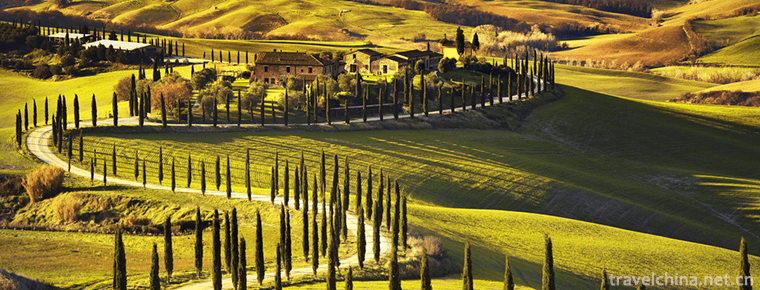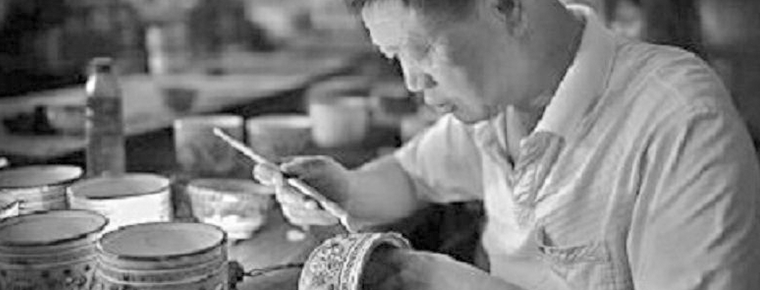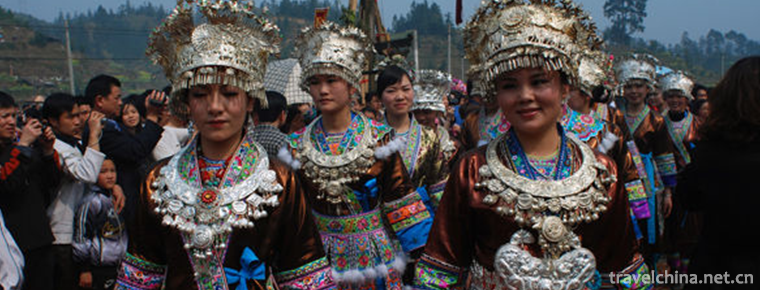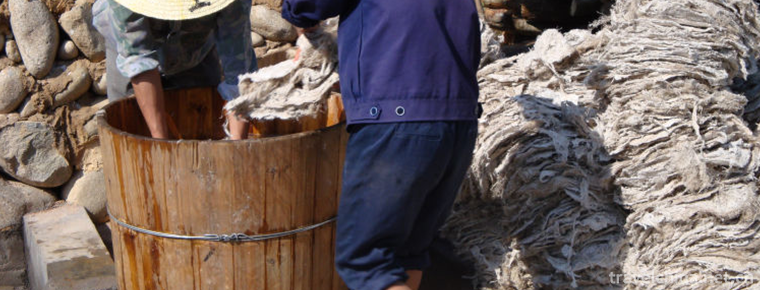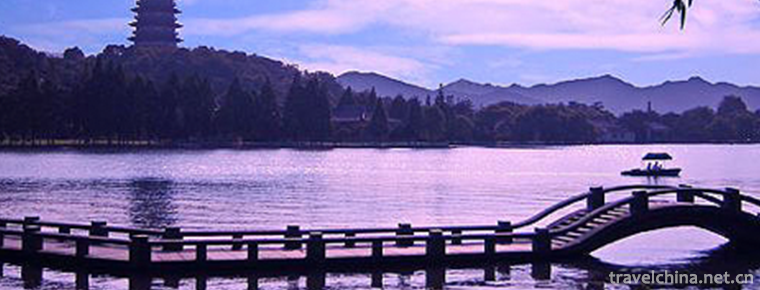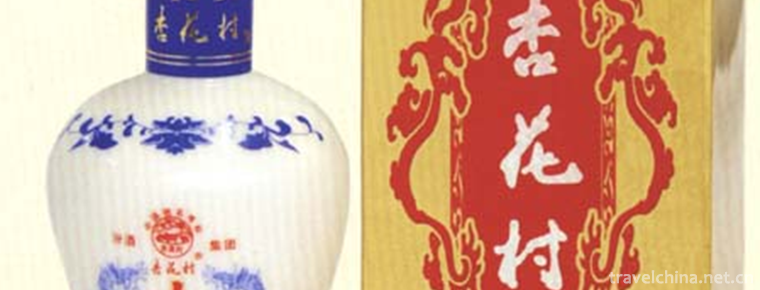Qinghai Yuexian
Qinghai Yuexian
Qinghai Yuexian is also called Yuexian, Yueyue Diao, Back Diao, Yueyue Diao, Meihu, etc. Qinghai Vietnamese String is one of the traditional folk songs in Qinghai Province. It can be called the "sister" art of Qinghai Pingxian. Accompanied instruments include three strings, erhu, banhu, flute and calabash, which are festivalized by bangzi. The repertoire of Yuexian is mostly short Arias with rich content. On June 7, 2008, Yuexian of Qinghai Province was listed in the second batch of national intangible cultural heritage list with the approval of the State Council.
historical origin
Yuexian in Qinghai was introduced from Shaanxi in the middle of Qing Dynasty. Guo Futang, a well-known Vietnamese string artist in Qinghai, studied art under Ma Dapizi's door in Shaanxi in his early years, and his footprints spread all over Shaanxi, Gansu and Qinghai. During the development of Yuexian in Qinghai, artists absorbed a large number of traditional folk minors and ancient ditties, and enriched them in many aspects, such as singing, Tao Bai, language and style.
From the description of characters to historical events, news and current events, scenery of mountains and rivers, all of them are in the scope of its expression. Its remarkable feature is that it reflects real life very quickly. Such works as Yuanshan Rebellion, Dong Wax Craftsman, Kuomintang to Qinghai, which reflected the peasant uprising in Huangzhong in the late Qing Dynasty, the political chaos in Northwest China in the early years of the Republic of China, and Liberation of Qinghai, which reflected the rebirth of the Qinghai people, were all compiled and sung at that time, and were well-known and widely circulated.
artistic characteristics
Basic introduction
One of the local traditional folk arts in Qinghai Province is also called "Moon String", "Moon Tune", "Back Tune", "Yue Tune" and "Seating Ground and Eyebrow Household". Since the middle of Qing Dynasty was introduced from Shaanxi, the names of the main tunes and the sentence patterns of the lyrics are basically the same as those of the Meihu in Shaanxi. It is popular all over the Huangshui River Basin. Qupai and its main tunes are more than 50, accompanied by three strings, Banhu, Erhu, Shuizi (ringing), Bangzi, flute and so on.
Artistic Characteristics
Yuexian in Qinghai has the linguistic characteristics of traditional folk literature. Its words are popular and vivid. It is close to spoken language. Its expressive force is rich, rigid and flexible, graceful and moving. Part of the lyrics is based on seven-character sentences, the Four-Sentence pattern of rhyming up and down pairs or one, two or four sentences; part is based on cross sentences; part is based on seven-character and cross can be sung; and many tunes are in the form of long and short sentences.
Qinghai Yuexian's description from characters to historical events, news and current events, mountains and rivers is the content of its expression. Its remarkable feature is that it reflects real life very quickly.
Singing Form
In addition to sitting and singing, Qinghai Yuexian also has walking and singing performances. The way of singing is usually one person, but there are also two or three people singing together. Ordinary performances are performed in the audience. The passage consists of Qianqiao - Qianbeigong - other tunes (Wugeng, Xijing, Gangdong, Complaint, Slow complaint, Dongdiao, Cut Indigo, etc.) - Qianbeigong - Qianqiao. The melody of the music part is closely combined with the lyrics. It has powerful means of expressing emotions. Because the lyrics are restricted by the tunes, the metrics are more rigorous, requiring the lyrics to rhyme in the same way and fill in the lyrics according to their metrics.
Yuexian is good at expressing traditional folk life stories, which is one of the reasons why Yuexian sang for the masses. Its repertoire "Xiaoguxian", "Feng Ye Station Store" and "Carving Money Ghost" are widely circulated works. Crossing strings is a form of music in the form of syntheses. The melody is smooth and moving. There are more than 50 melodies and major melodies.
A cross-stringed section is generally composed of front fork-back Work-Back fork of other major tunes, such as Wugeng, Xijing, Gangci, tightly complaint, slow complaint, East tune, energy-shearing flower, etc. -back Work-Back fork. As a part of music, melody is closely combined with lyrics, which is a powerful means of expressing emotions. Therefore, the lyrics are restricted by melody and have more rigorous metrics, requiring them to rhyme in the same way and fill in the lyrics according to their metrics. Words should be popular and vivid, close to spoken language, without biting words, cold and sour traces, with the characteristics of folk literature language and rich expression.
representative figure
Expressive, flexible, graceful and moving. Famous Vietnamese artists include Li Deming, Xie Changde, Zhang Qishan, Chen Yude and Li Wangchun.
Representative Works
Accompanied instruments include three strings, erhu, banhu, flute and calabash, which are festivalized by bangzi. Yuexian's repertoires are mostly short songs, which are rich in content, such as "Dongwu Recruitment for Families" and "FuBed Wat", which are suitable for celebrating the happy celebration; there are "Mother-in-law Fighting", "Silly Doll Selling Cloth", "Nail Tank", "Xiashuan" and so on; there are "Van Gong" and "Sister's Love" which delicately depict the psychological activities of the characters; there are "Taoyuan Knot" which narrates the stories of historical figures. Yi, Black Interview, etc. There are also songs like the Sanqu of the Ming Dynasty, such as "The World", "Home Hope" and so on. Since the 1950s, there have been some new songs reflecting real life.
Yuexian's repertoires are mostly short songs with rich contents, such as "inviting relatives from Dongwu" and "full bed" which are suitable for celebrating the happy celebrations, and "fighting between parents", "selling cloth by silly dolls", "nail vat", "going down to Sichuan" and so on, as well as "The Vatican Palace" and "Sister's Exploration" which delicately depict the psychological activities of the characters, and "Peach" which narrate the stories of historical figures. Yuanjieyi, Black Interview, etc. There are also songs like the Sanqu of the Ming Dynasty, such as "The World", "Home Hope" and so on. Since the 1950s, there have been some new songs reflecting real life.
Distribution area
Yuexian is popular in the eastern agricultural area of Qinghai Province, mostly for amateur performances. Many Yuexian fans also often sing at family and friends Festival banquets. Yuexian belongs to the combined system of Qupai, with more than 10 Qupai, such as Qiancha, Houcha, Beigong, Zaoluo, Gangdong, Tight Fu, Dalian, Wugeng, Picking Flowers, Cutting Flowers, etc. Besides the usual sitting and singing forms, there are also walking singing performances. Accompanied instruments include three strings, erhu, banhu, flute and calabash, which are festivalized by bangzi.
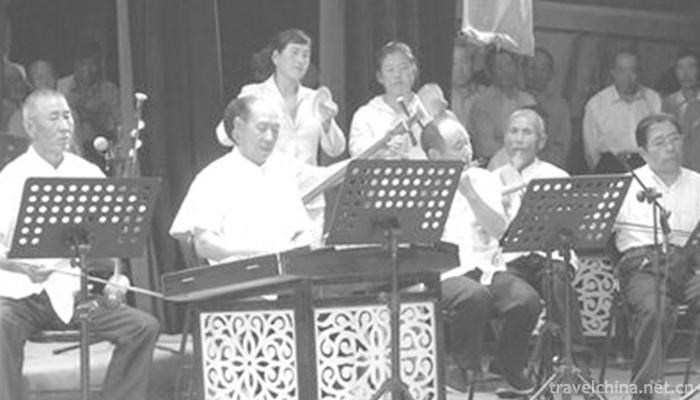
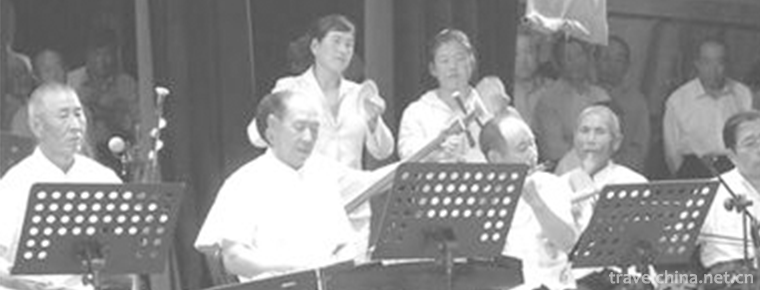
Qinghai Yuexian
-
Three Gorges Dam
The Three Gorges Dam is located in Sandouping Town, Yichang City, Hubei Province, China. It is 38 kilometers from the Gezhouba
Views: 179 Time 2018-11-11 -
Bashang grassland
Bashang grassland, also known as the first grassland in the north of Beijing, is located in Hebei Province. It refers to the meadow grassland formed by the steep rise of grassland and the reasons of c
Views: 153 Time 2019-01-02 -
Jingdezhen Handmade Porcelain Craft
Jingdezhen Handmade Porcelain Craft, the traditional handmade Porcelain Craft in Jingdezhen City, Jiangxi Province, is one of the national intangible cultural heritage.
Views: 145 Time 2019-05-08 -
Miao Series Slope Cluster
Miao Series Slope Club refers to the festival activities of villages and villages in Rongshui County, Guangxi Zhuang Autonomous Region during the period from the third to seventeenth day of the first
Views: 161 Time 2019-06-05 -
Making Techniques of Lianshi Paper in Lead Mountain
Lead Mountain Lianshi Paper Making Skills, local traditional handicraft in Jiangxi Province, one of the national intangible cultural heritage.
Views: 213 Time 2019-06-10 -
Legend of West Lake
The legend of West Lake is one of the local folklores in Hangzhou, Zhejiang Province. It is a national intangible cultural heritage list. Xihu beautiful mountains and rivers, snowflakes and moons, sin
Views: 146 Time 2019-07-01 -
Brewing Techniques of Fen Liquor in Xinghua Village
The brewing process of Fen liquor in Xinghua Village is complicated. Fen liquor in Xinghua Village is finally brewed through six main processes: grinding, moistening, steaming, fermentation, distillat
Views: 154 Time 2019-07-08 -
Southwest University of Finance and Economics
Southwest University of Finance and Economics is a national key university under the Ministry of Education's "211 Project" and "985 Project" dominant disciplines innovation platfor
Views: 170 Time 2019-08-31 -
Collection value of Chinese embroidery
Mr. Chen, a fan of antique collection, bought a silk embroidery at Fuzhou flea market for more than 10000 yuan 19 years ago, which is worth at least 300000 yuan by 2008. This embroidery, about 1.8 meters long, has a dark red background, with butterfly
Views: 363 Time 2020-12-12 -
Suining secondary industry
In 2019, the city's industrial added value will reach 49.158 billion yuan, an increase of 8.7%, contributing 50.7% to economic growth, and boosting economic growth by 4.1 percentage points. The number of Industrial Enterprises above Designated Size reached 573
Views: 364 Time 2020-12-16 -
Neijiangs location
Neijiang City is located in the southeast of Sichuan Basin and the middle of the lower reaches of Tuojiang River. Chongqing in the East, Chengdu in the west, Zigong, Yibin and Luzhou in the south, Ziyang and Suining in the north. Its geographical location
Views: 361 Time 2020-12-16 -
Leshan secondary industry
In 2019, the industrial added value of Leshan City is 68.028 billion yuan, an increase of 8.8% over the previous year, accounting for 36.5% of the city's GDP, driving economic growth by 4.0 percentage points and contributing 52.8% to economic growth.
Views: 385 Time 2020-12-17

